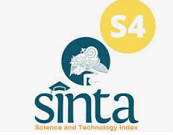Tourism Village Development Strategy Anjir Muara District, Barito Kuala Regency
Abstract
The problem with tourism development is that local village communities have not been able to utilize and manage the potential of existing resources as potential for the tourist village, so that tourism activities or activities in the area have not been able to provide tourists with an experience that is identical to the tourist village. This research aims to analyze development strategies that are appropriate to the conditions in the Anjir Muara District Tourism Village. This research uses a quantitative approach to describe the problems and focus of this research. The sampling technique in the Anjir Muara District Tourism Village used Accidental Sampling. Researchers use this technique to take samples based on chance, so that researchers are able to take samples of anyone they meet at the research location without prior planning. The sample used in this research was 96 respondents. The data analysis used is SWOT analysis to determine development strategies that suit existing conditions in the Anjir Muara District Tourism Village. From the research results, it can be seen that one of the development strategies that suits the conditions of the Marabahan Baru Tourism Village is to develop agrotourism by showing the farming culture of the local community. One of the development strategies that is appropriate to the conditions of the Anjir Serapat Muara Tourism Village is to develop existing river tourism activities, such as creating tour packages around the tourist village including mangrove parks and local fruit gardens to make tourism activities unique and different from other tourism in the area. surroundings. Meanwhile, a development strategy that is appropriate to the conditions of the Anjir Serapat Muara I Tourism Village is to utilize easy access to the pier in Anjir Serapat Muara I Village to offer air transportation services to the local community.
Keywords
Full Text:
PDFReferences
Arida, I. N. S., Wiguna, P. P. K., Narka, I. W., & Febrianti, N. K. O. (2017). Development Planning of Tourist Village Using Participatory Mapping (Case study: Mambal Village, Badung Regency, Indonesia). IOP Conference Series: Earth and Environmental Science, 98(1), 0–10.
Arisanty, D., Alviawati, E., Setiawan, F. A., Adyatma, S., & Rahman, A. M. (2021). Floating Market Tourism Area: Sustainable Tourism Management Strategy. Proceedings of the 2nd International Conference on Social Sciences Education (ICSSE 2020), 525(Icsse 2020), 417–422.
Azhari, B., & Santoso, A. B. (2019). Tinjauan Geografi dalam Pengembangan Desa Wisata Serang di Kecamatan. Geo-Image, 8(2), 157–165.
BPS Kabupaten Barito Kuala. (2022). Kabupaten Barito Kuala dalam Angka 2022. BPS Kabupaten Barito Kuala.
Dinas Pariwisata Provinsi Kalimantan selatan. (2017). Renstra Dinas Pariwisata Provinsi Kalimantan Selatan Tahun 2016-2021.
Hastuti, K. P., Aristin, N. F., Saputra, A. N., & Setiawan, F. A. (2022). Perancangan Tourism Display Board di Objek Wisata Pasar Terapung Lok Baintan. 2(2), 282–290.
Indrianeu, T., Fadjarajani, S., & Singkawijaya, E. B. (2021). Analisis Potensi Pariwisata Di Kabupaten Cianjur. Jurnal Geografi Dan Pengajarannya, 19(1), 73.
Kementerian Pariwisata. (2019). Buku Panduan Desa Wisata (I). Jadesta.
Puspitasari, D. (2019). Strategi Pengembangan Produk Pariwisata (Studi Kasus Pantai Parangtritis Di Kabupaten Bantul). Universitas Sanata Dharma, 1–108.
Putranto, A. (2016). Analisis Geografi Terhadap Potensi Wisata di Situ Cipondoh Kota Tangerang Banten. Repository.Uinjkt.Ac.Id.
Putri, O. A., & Andriana, A. N. (2021). Analisis Atraksi Amenitas dan Aksesibilitas dalam Meningkatkan Kepuasan Wisatawan (Studi Kasus Pantai Biru Kersik Marangkayu Kabupaten Kutai Kartanegara). Jurnal Kajian Dan Terapan Pariwisata, 2(1), 51–58.
Rahma, A. A. (2020). Potensi Sumber Daya Alam dalam Mengembangkan Sektor Pariwisata Di Indonesia. Jurnal Nasional Pariwisata, 12(1), 1.
Rahmi, S. A. (2016). Pembangunan Pariwisata Dalam Perspektif Kearifan Lokal. Reformasi, 6(1), 76–84.
Rindi, T. A. (2019). Pemberdayaan Masyarakat Melalui Pengembangan Desa Wisata (Studi Kasus Desa Wonokarto Kecamatan Sekampung Kabupaten Lampung Timur). Fakultas Ekonomi Dan Bisnis Islam.
Saputra, A., Arisanty, D., & Normelani, E. (2018). Potensi Dan Upaya Pengembangan Obyek Wisata Goa Batu Hapu Di Kecamatan Hatungun Kabupaten Tapin Kalimantan Selatan. Jurnal Pendidikan Geografi, 5(3), 28–36.
Setiawan, I. (2019). Potensi Destinasi Wisata Di Indonesia Menuju Kemandirian Ekonomi. Prosiding Seminar Nasional Multi Disiplin Ilmu & Call for Papers Unisbank (Sendi_U), 53(9), 1689–1699.
Sudibya, B. (2018). Wisata Desa dan Desa Wisata. Jurnal Bali Membangun Bali, 1(1), 22–26.
Sumarabawa, I. G. A., Wesnawa, I. G. A., & Astawa, I. B. M. (2013). Ketersediaan Aksesibilitas Serta Sarana dan Prasarana Pendukung Bagi Wisatawan Di Daerah Wisata Pantai Pasir Putih, Desa Prasi, Kecamatan Karangasem. Jurnal Pendidikan Geografi, 3(1), 1–14.
Suranny, L. E. (2020). Pengembangan Potensi Desa Wisata Dalam Rangka Peningkatan Ekonomi Perdesaan Di Kabupaten Wonogiri. Jurnal Litbang Sukowati : Media Penelitian Dan Pengembangan, 5(1), 49–62.
Syah, F. (2017). Strategi Mengembangkan Desa Wisata. Prosiding Seminar Nasional Multi Disiplin Ilmu &Call For Papers Unisbank Ke-3, 335–341.
Wardiyanto, & Baiquni, D. M. (2015). Perencanaan Pengembangan Pariwisata. Lubuk Agung.
Wulandari, F. N. A., & Rintasari, N. (2019). Dampak Keberadaan Desa Wisata terhadap Peningkatan Perekonomian dan Kehidupan Sosial Masyarakat. Jurnal Sosial Ekonomi, 1(1), 1–18.
DOI: http://dx.doi.org/10.20527/jpg.v11i2.20239
Article Metrics
Abstract view : 73 timesPDF - 42 times
Refbacks
- There are currently no refbacks.
Copyright (c) 2024 JPG (Jurnal Pendidikan Geografi)

This work is licensed under a Creative Commons Attribution 4.0 International License.
Indexed by:
JPG (Jurnal Pendidkan Geografi) is licensed under a Creative Commons Attribution 4.0 International License.

 JPG (Jurnal Pendidikan Geografi)
JPG (Jurnal Pendidikan Geografi)




















